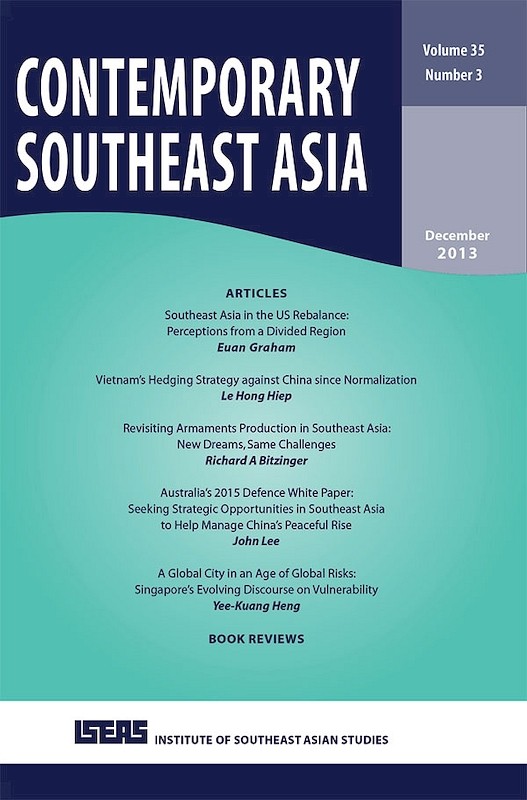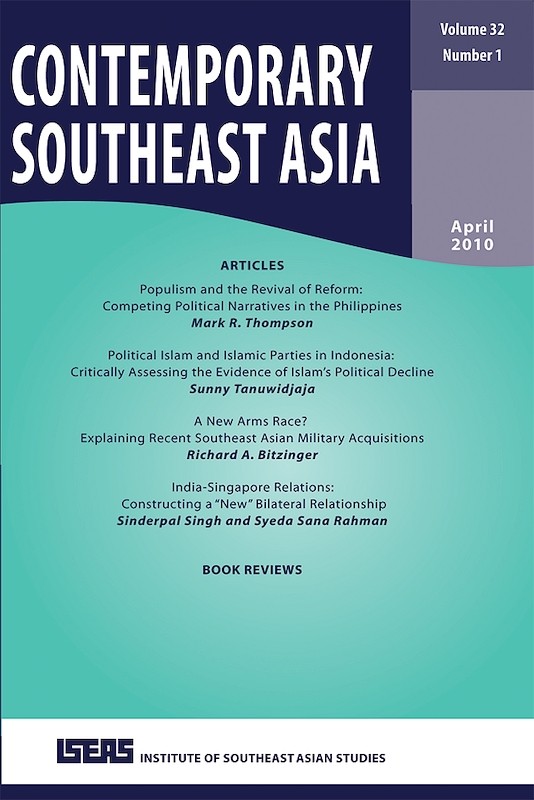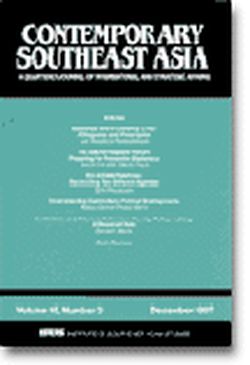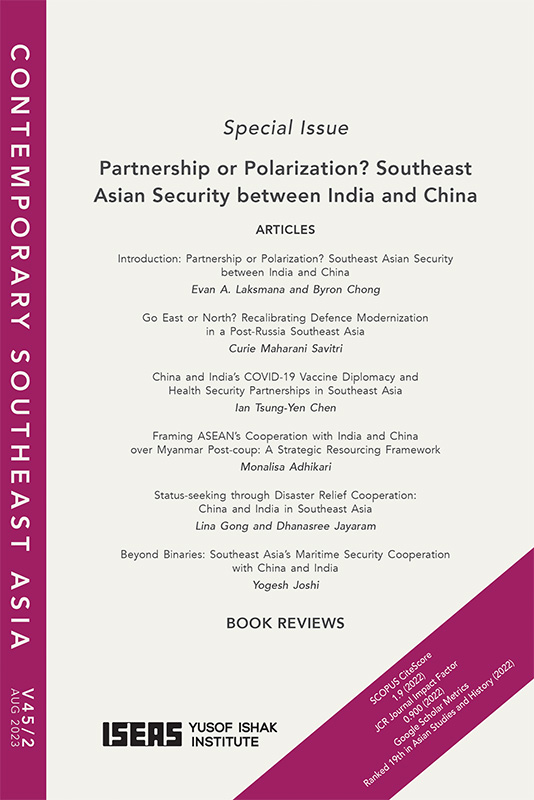Contemporary Southeast Asia: A Journal of International and Strategic Affairs Vol. 17/2 (Sept 1995)
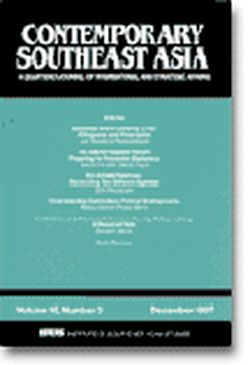
Date of publication:
September 1995
Number of pages:
134
Code:
CS17/2
Contents
-
Preliminary pages
- ARTICLES
-
China's Foreign Policy Under Status Discrepancy Status Enhancement, by Sheng Lijun, author see abstractThis article challenges one dominant theme in the existing Western literature about China's foreign policy in the late 1970's and the early 1980s, that is, Chinas foreign policy was overwhelmingly influenced by its concern with the Soviet threat. It argues that status discrepancy and status enhancement played a much more important role than commonly realized, given the recent evidence that top Chinese leaders, such as Deng Xiaoping, had already changed their perception of war and the Soviet threat in the late 1970s when Deng was publicly intensifying efforts to establish an international united front against the Soviet Union. The article also uses this "status enhancement" conceptual framework to examine China's foreign policy since 1949 and explores the impact of a rising China in the 1990s with its enhanced status.
-
The Future Prospects of Sine-Vietnamese Relations: Are Trade and Commerce the Critical Factors for Sustainable Peace?, by Clifford J Shultz II, William J Ardrey, IV, authors see abstractThe frequently contentious relationship between China and Vietnam is often seen as a critical component that may impede the continuing economic progress of Southeast Asia. The purpose of this article is to review that relationship, some of the underlying factors that affect it, and to share prognoses for future relations. Both pessimistic and optimistic views are presented. The article concludes with the argument that mutual gain through trade and commerce will far outweigh the benefits to be derived from political discord, sabre-rattling, and military involvement, and that despite the inherent instability associated with past hostilities and uncertainties about future leadership and territorial claims, in the final analysis both countries will effect policy decisions that will enable further economic growth and regional harmony.
-
Managing Dependency in a Reforming Economy: The Lao PDR, by Jonathan Rigg, author see abstractThe Lao People's Democratic Republic is one of Asia's poorest, smallest and least studied countries. In 1986, the Lao Government introduced a policy of economic reform - chin thanakaan mai or "new thinking" - and since that date the economy has been undergoing a fundamental and continuing shift towards the market. This article examines the developmental context of economic reform in the country, outlining the constraints and opportunities that present themselves. The challenge of "managing" land-lockedness in a dependent and vulnerable country is discussed as a key theme in Laos' development.
-
Transnational Production and Security: Southeast Asia' "Growth Triangles", by Amitav Acharya, author see abstractThis article explores the impact of transnational production on security, with specific reference to the "growth triangles" of Southeast Asia. After highlighting the changing global and regional strategic environment and the role of the state in promoting growth triangles, the article argues that they should be examined for their security-enhancing as well as security diminishing implications. With respect to the former, of particular significance is the impact of the growth triangles in moderating inter-state conflict, in contributing to the internal stability of the participating states, and in increasing the stakes of the world's major powers in the security and well-being of the region. Among the security-diminishing consequences of the growth triangles is their potential to exacerbate inter-ethnic and political tensions within participating states as well as foster inter-state suspicions over the uneven distribution of their economic benefits.
-
The Notion of an Arms Race in the Asia-Pacific, by Bunn Sri Na Nagara, author see abstractThis article questions some popular notions concerning an "arms race" or an arms build-up in the Asia-Pacific region. It argues that there is no arms race in East Asia, despite reports of some high-profile defence "capital expenditure" acquisitions. Occasional or arbitrary acquisitions do not constitute a consistent or region-wide defence expansion programme, much less indicate a sense of political adventurism. Conversely, cuts in defence expenditure need not mean corresponding increases in social welfare provisions. Transparency in defence matters remains important, while instruments like the ASEAN Regional Forum, the proposed Southeast Asia Nuclear Weapons-Free Zone, and a new security doctrine are useful for contemporary regional security founded on confidence-building.
-
A Further Look at UNTAC's Performance and Dilemmas: A Review Article, by Sorpong Peou, author see abstractUNTAC in Cambodia's Messy Domestic Conditions; UNTAC's Performance: Problems From Within; The P-5 Factor in UNTAC's Operation: Questionable Commitments to Impartiality; Financial Commitments to UNTAC; China, France and the United States: Towards the Khmer Rouge.
- BOOK REVIEWS
-
BOOK REVIEW: Southeast Asian Chinese and China: The Social-Cultural Dimension and Southeast Asian Chinese and China: The Political-Cultural Dimension edited by Leo Suryadinata, by Yao Souchou, author
-
BOOK REVIEW: Eastern Asia: An Introductory History edited by Cilin Mackerras, by Gerald Jordan, author
-
BOOK REVIEW: Taiwan in the Asia-Pacific in the 1990s edited by Gary Klintworth, by Fu Kuo Liu, author

